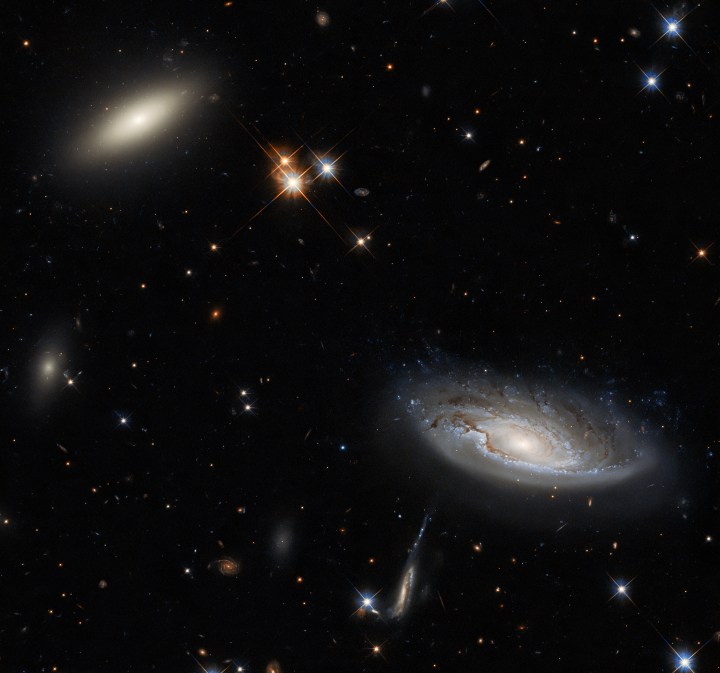
This week’s beautiful image of space captured by the Hubble Space Telescope shows two large galaxies, part of the Perseus cluster, against a background starfield. The galaxies are 2MASX J03193743+4137580, shown on the left of the image, and UGC 2665, shown on the right.
The Perseus cluster is enormous, containing thousands of galaxies and being one of the most massive objects in the known universe. It also gives off large quantities of X-rays, making it the brightest cluster in the sky when observed in the X-ray wavelength. X-ray data from this cluster was also important in the development of theories of dark matter.
If you are wondering where the name for the cluster comes from, like many astronomical objects, it is named after a mythological figure. “Perseus is an important figure in Greek mythology, renowned for slaying Medusa the Gorgon — who is herself famous for the unhappy reason that she was cursed to have living snakes for hair,” the Hubble scientists write. “Given Perseus’s impressive credentials, it seems appropriate that the galaxy cluster is one of the biggest objects in the known universe, consisting of thousands of galaxies, only a few of which are visible in this image. The wonderful detail in the image is thanks to the WFC3’s powerful resolution and sensitivity to both visible and near-infrared light, the wavelengths captured in this image.”
Hubble itself is currently experiencing problems with its computer, which means its scientific instruments are not currently collecting data. However, engineers on the ground are planning to switch from the current hardware to backup hardware included in the telescope in the hopes of fixing the issue. In the meantime, researchers have previously collected data like this image to study.



